Abstract
Studies of pressure and temperature effects on glutamic acid transport and utilization indicated that hydrostatic pressure and low temperature inhibit glutamate transport more than glutamate respiration. The effects of pressure on transport were reduced at temperatures near the optimum. Similar results were obtained for glycine, phenylalanine, and proline. Pressure effects on the transport systems of all four amino acids were reversible to some degree. Both proline and glutamic acid were able to protect their transport proteins against pressure damage. The data presented indicate that the uptake of amino acids by cells under pressure is inhibited, which is the cause of their inability to grow under pressure.
Full text
PDF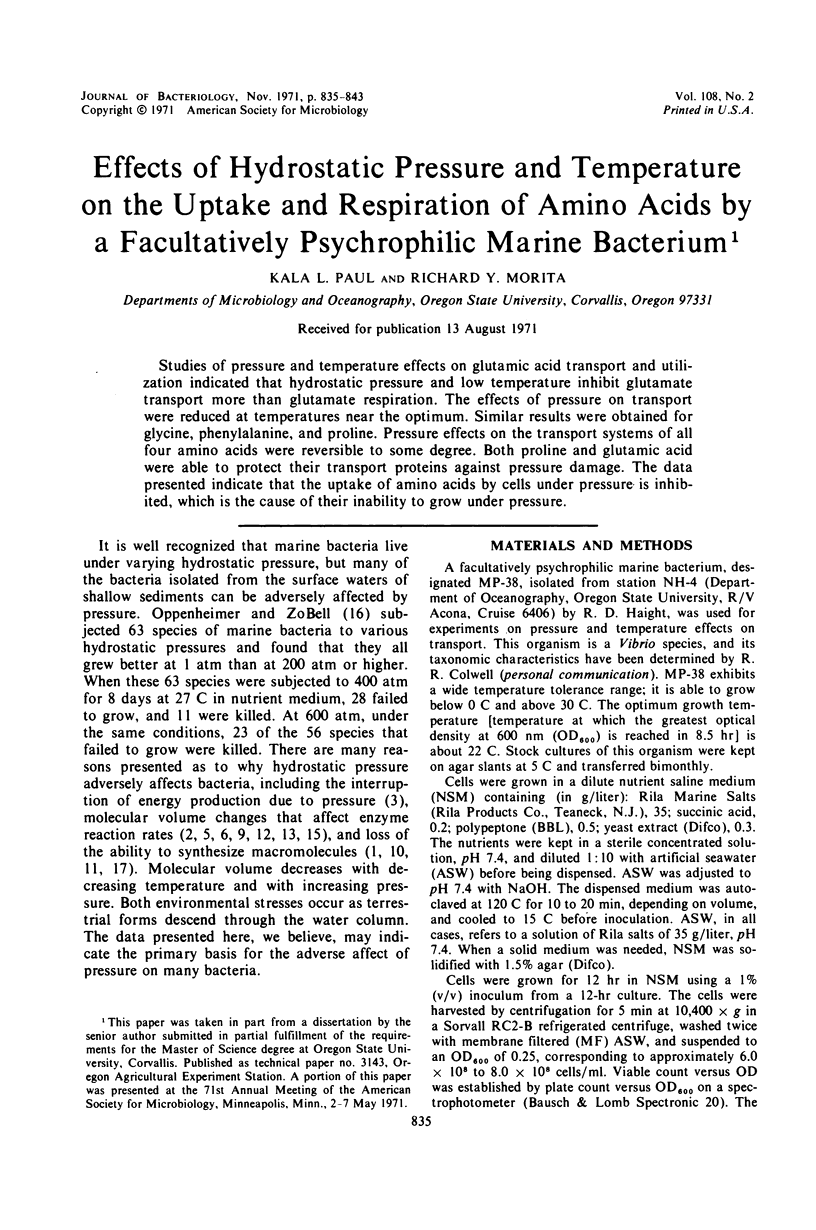
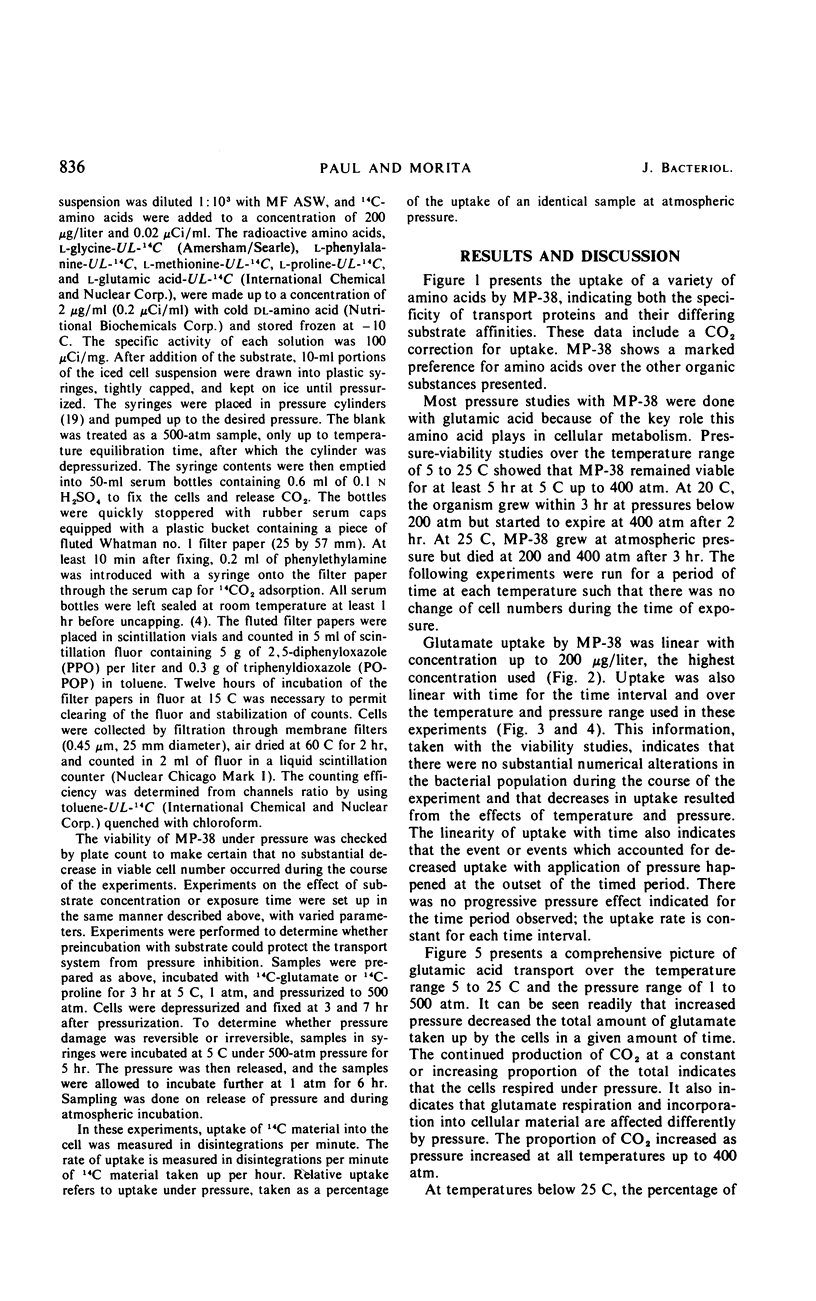

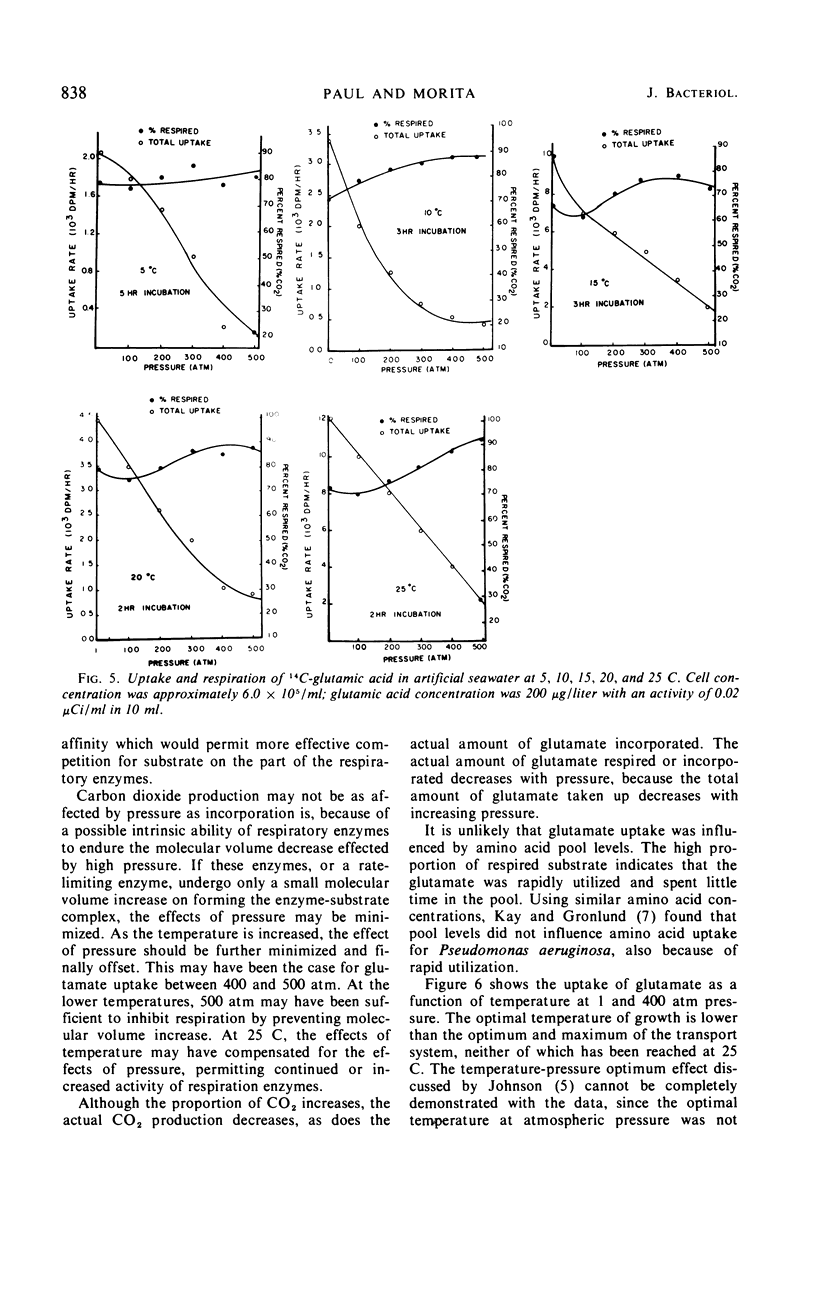
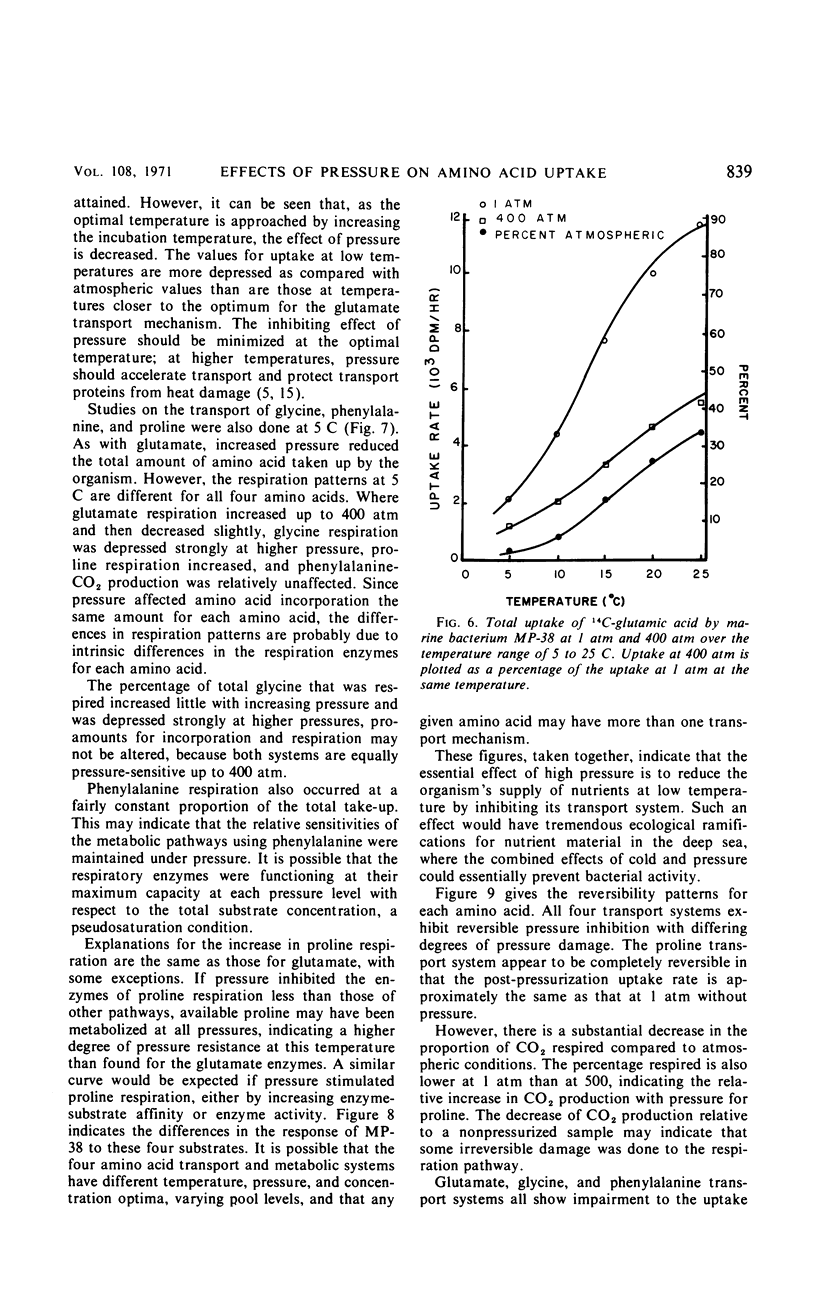
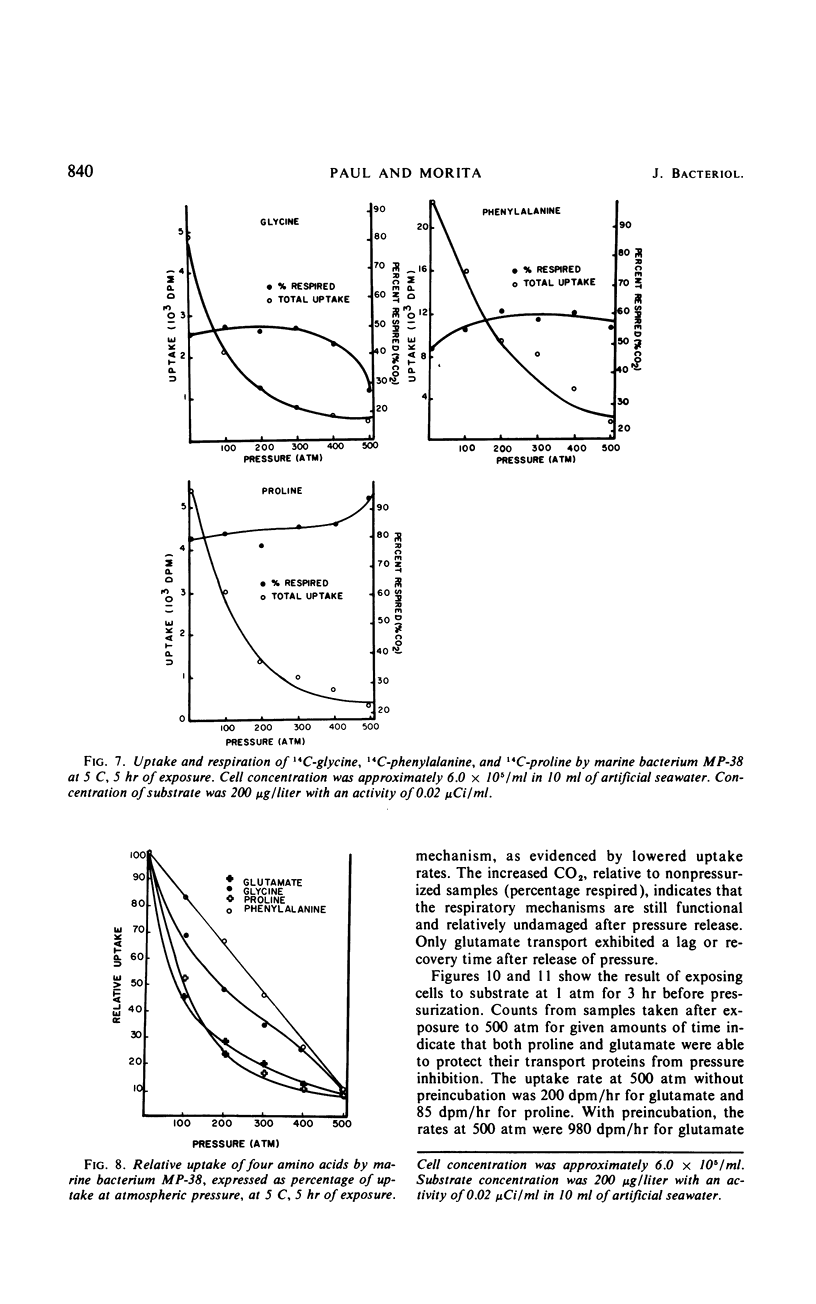
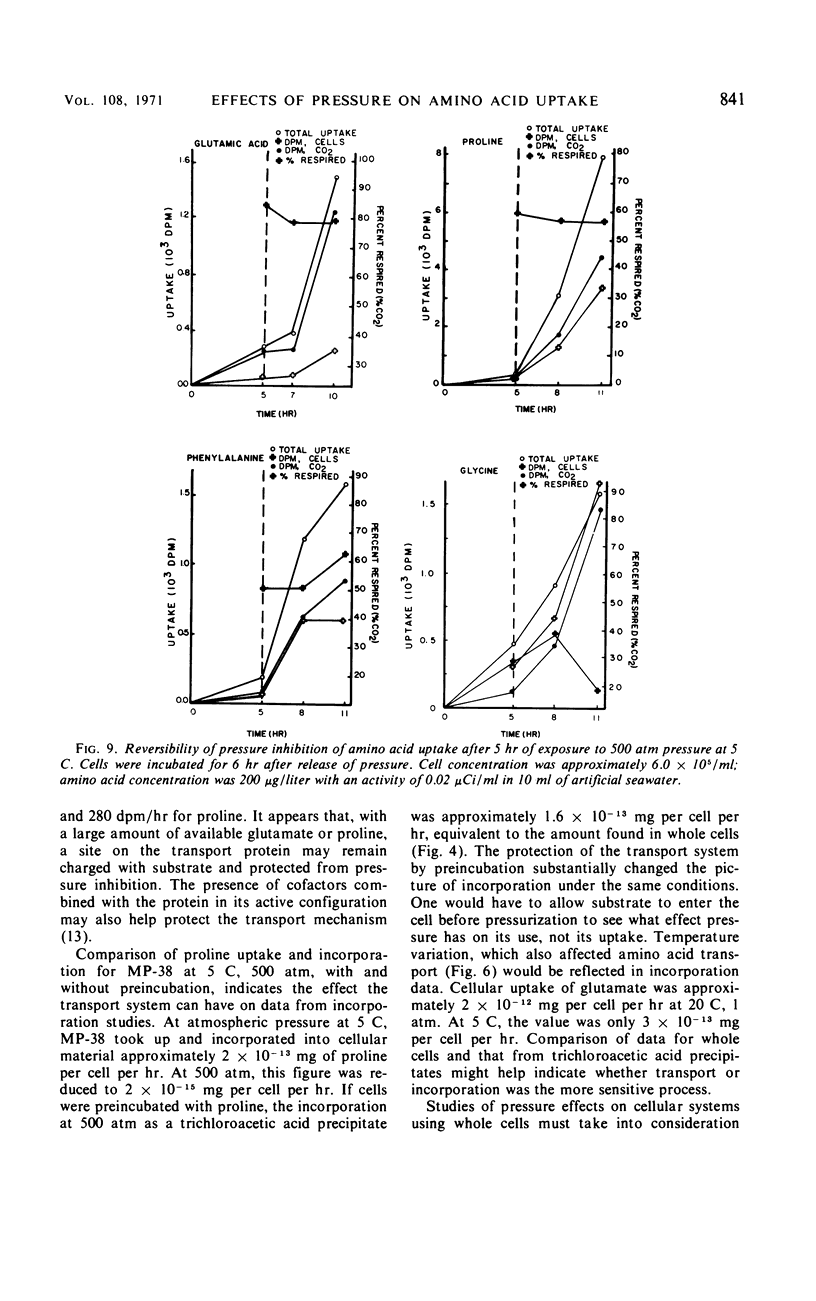
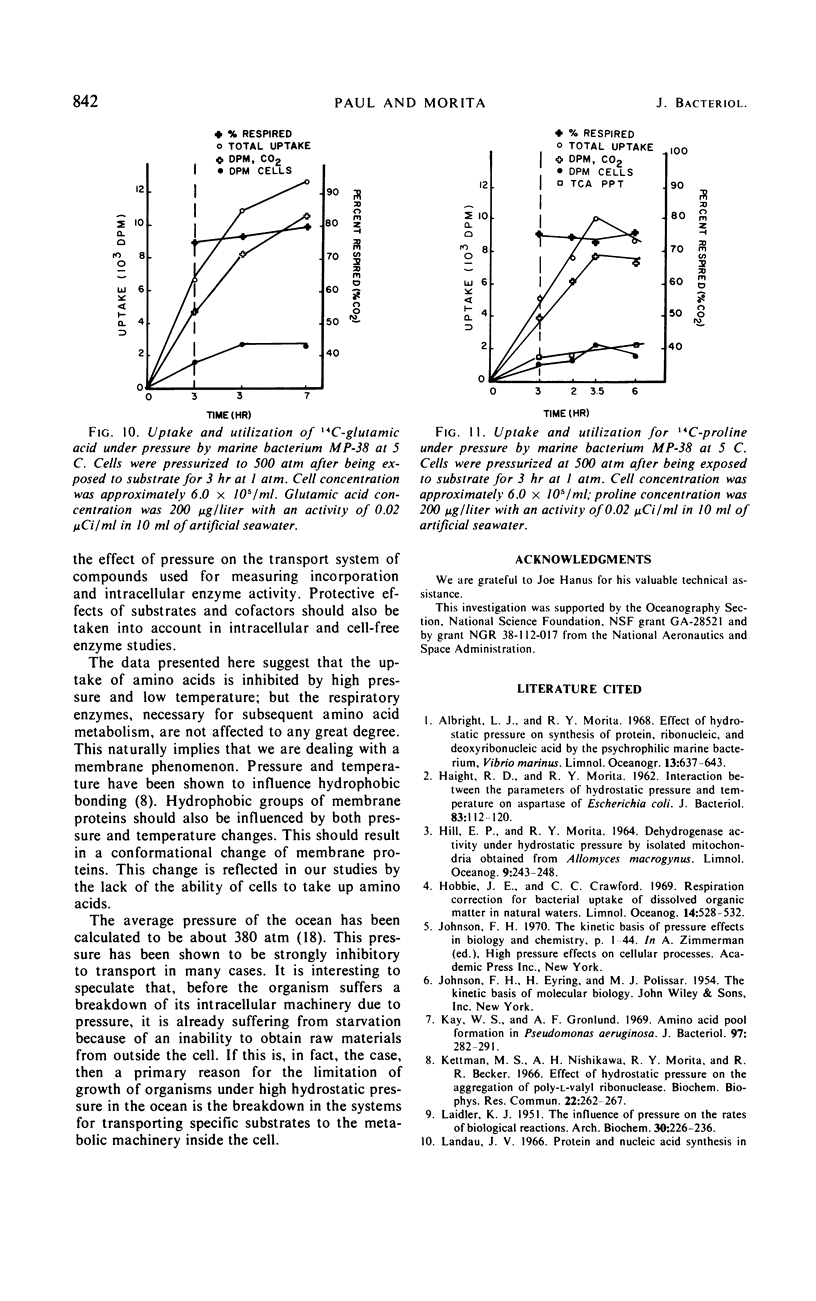

Selected References
These references are in PubMed. This may not be the complete list of references from this article.
- HAIGHT R. D., M ORITA R. Y. Interaction between the parameters of hydrostatic pressure and temperature on aspartase of Escherichia coli. J Bacteriol. 1962 Jan;83:112–120. doi: 10.1128/jb.83.1.112-120.1962. [DOI] [PMC free article] [PubMed] [Google Scholar]
- Kay W. W., Gronlund A. F. Amino acid pool formation in Pseudomonas aeruginosa. J Bacteriol. 1969 Jan;97(1):282–291. doi: 10.1128/jb.97.1.282-291.1969. [DOI] [PMC free article] [PubMed] [Google Scholar]
- Kettman M. S., Nishikawa A. H., Morita R. Y., Becker R. R. Effect of hydrostatic pressure on the aggregation reaction of poly-L-valyl-ribonuclease. Biochem Biophys Res Commun. 1966 Feb 3;22(3):262–267. doi: 10.1016/0006-291x(66)90475-x. [DOI] [PubMed] [Google Scholar]
- LAIDLER K. H. The influence of pressure on the rates of biological reactions. Arch Biochem. 1951 Feb;30(2):226–236. [PubMed] [Google Scholar]
- Landau J. V. Protein and nucleic acid synthesis in Escherichia coli: pressure and temperature effects. Science. 1966 Sep 9;153(3741):1273–1274. doi: 10.1126/science.153.3741.1273. [DOI] [PubMed] [Google Scholar]
- MORITA R. Y. Effect of hydrostatic pressure on succinic, formic, and malic dehydrogenases in Escherichia coli. J Bacteriol. 1957 Aug;74(2):251–255. doi: 10.1128/jb.74.2.251-255.1957. [DOI] [PMC free article] [PubMed] [Google Scholar]
- MORITA R. Y., HAIGHT R. D. Malic dehydrogenase activity at 101 C under hydrostatic pressure. J Bacteriol. 1962 Jun;83:1341–1346. doi: 10.1128/jb.83.6.1341-1346.1962. [DOI] [PMC free article] [PubMed] [Google Scholar]
- Pollard E. C., Weller P. K. The effect of hydrostatic pressure on the synthetic processes in bacteria. Bibl Laeger. 1966 Mar 14;112(3):573–580. doi: 10.1016/0926-6585(66)90261-5. [DOI] [PubMed] [Google Scholar]
- ZOBELL C. E., OPPENHEIMER C. H. Some effects of hydrostatic pressure on the multiplication and morphology of marine bacteria. J Bacteriol. 1950 Dec;60(6):771–781. doi: 10.1128/jb.60.6.771-781.1950. [DOI] [PMC free article] [PubMed] [Google Scholar]


